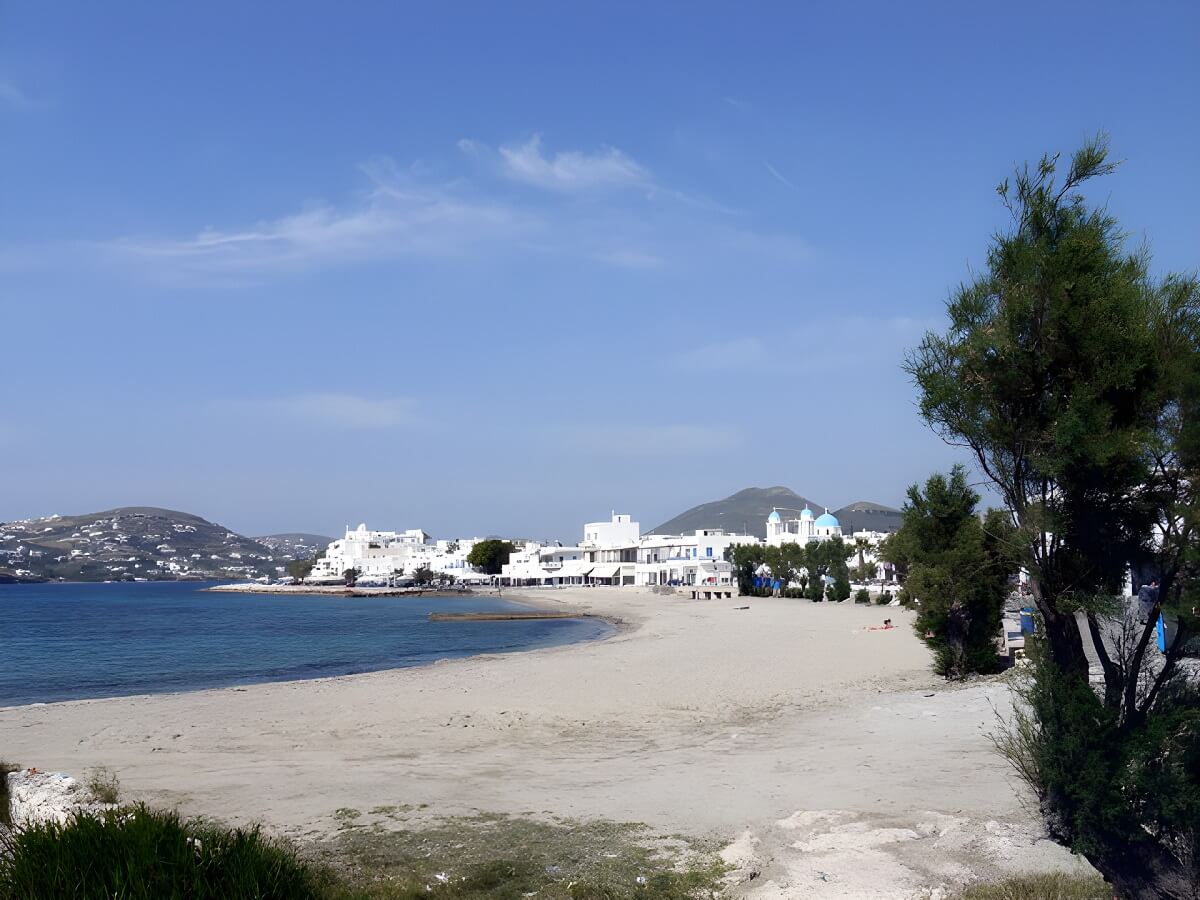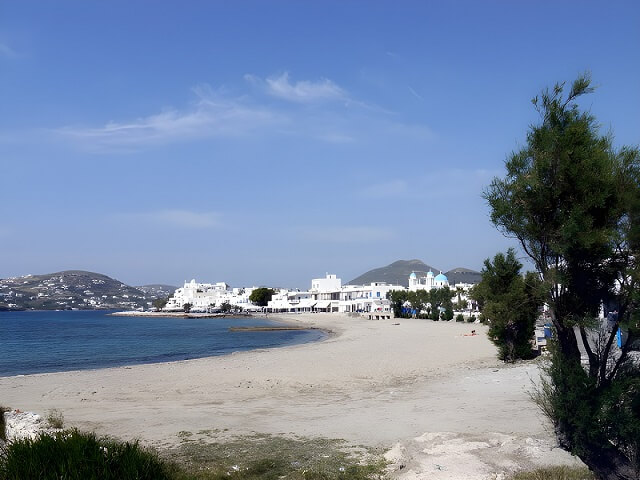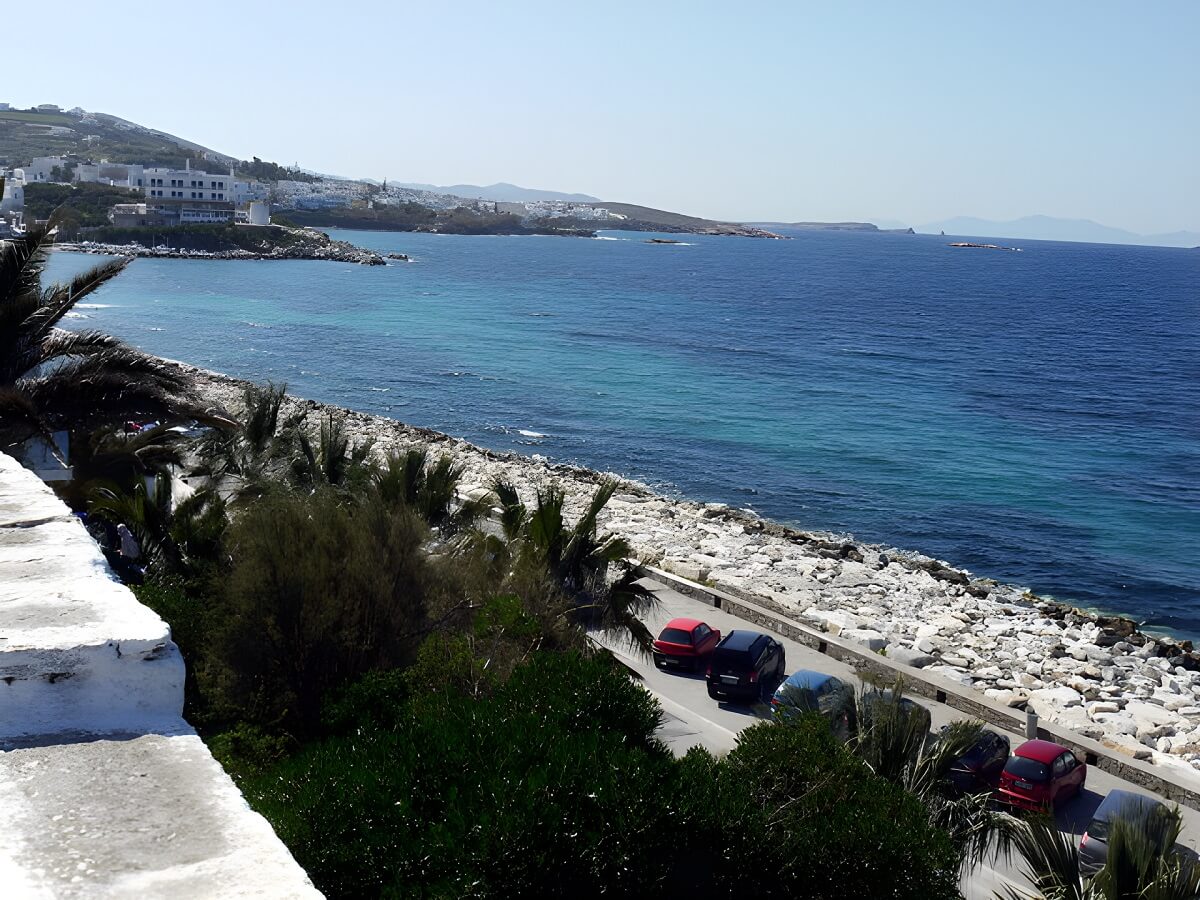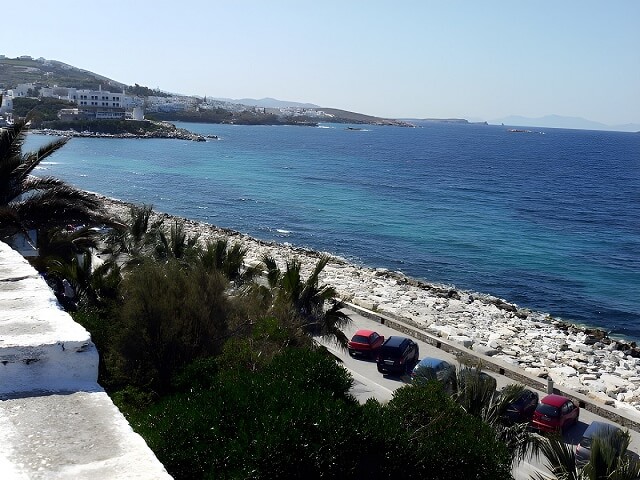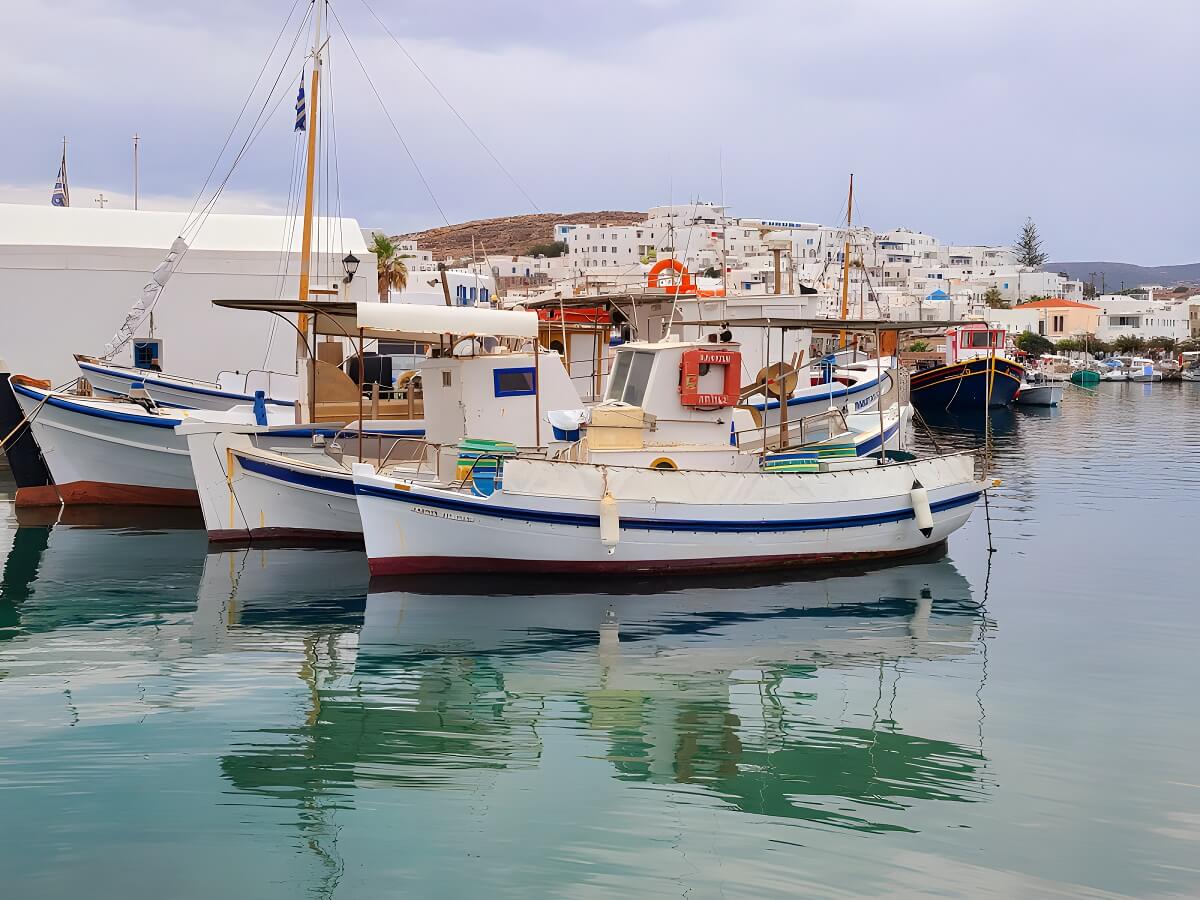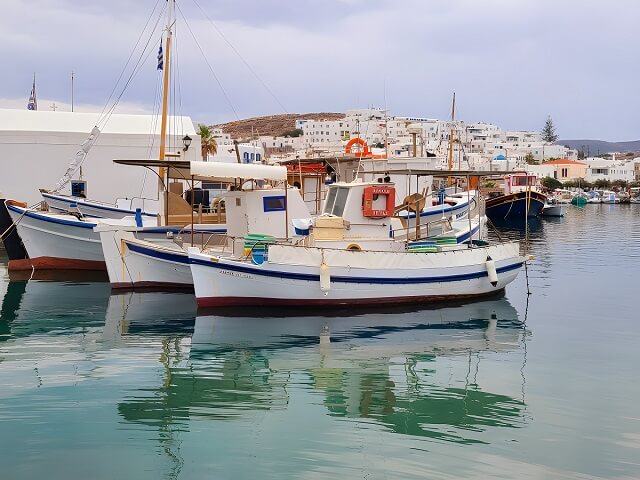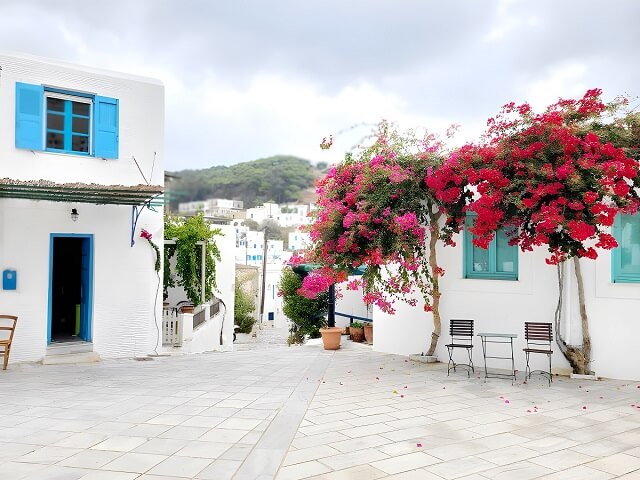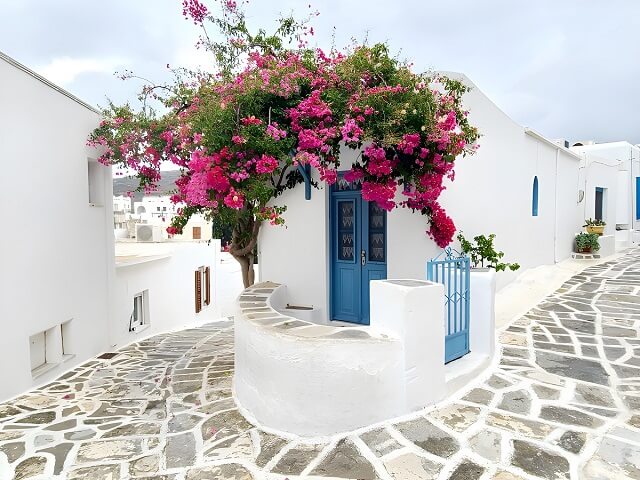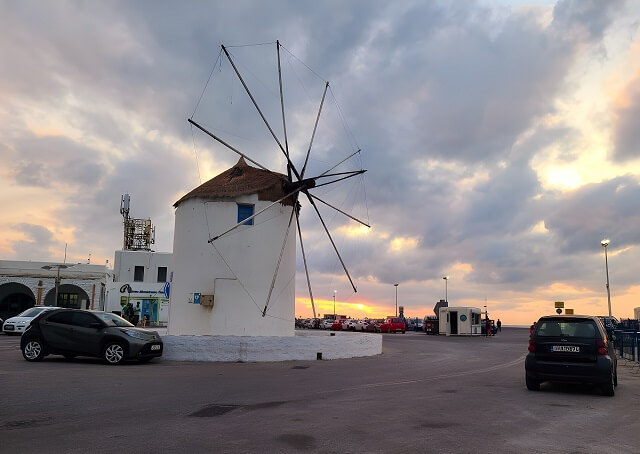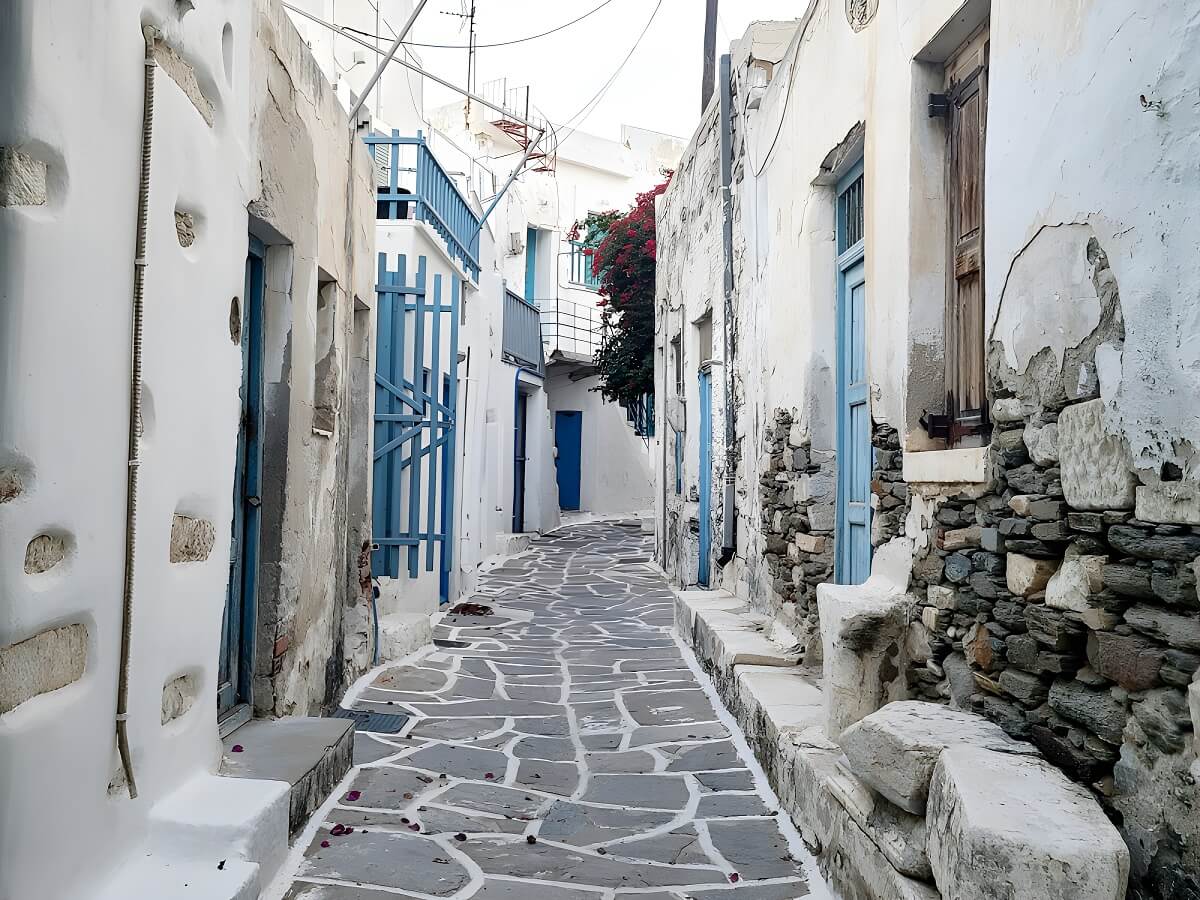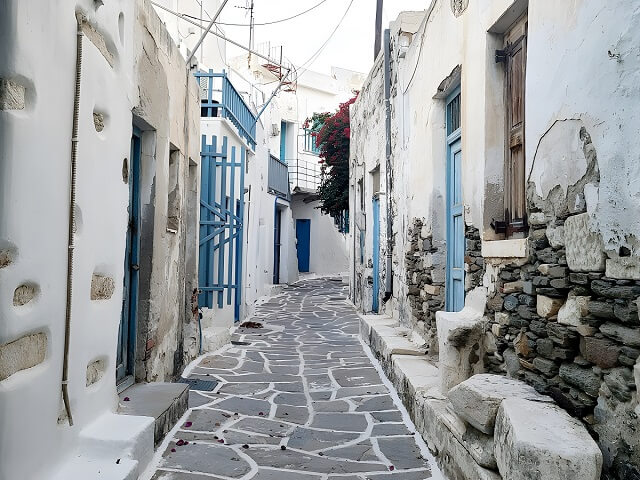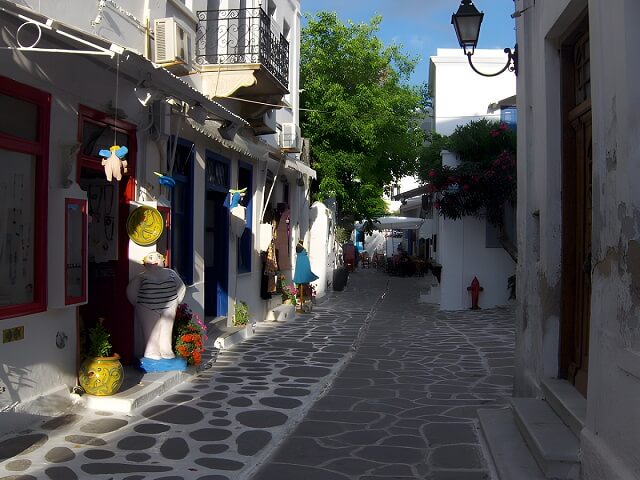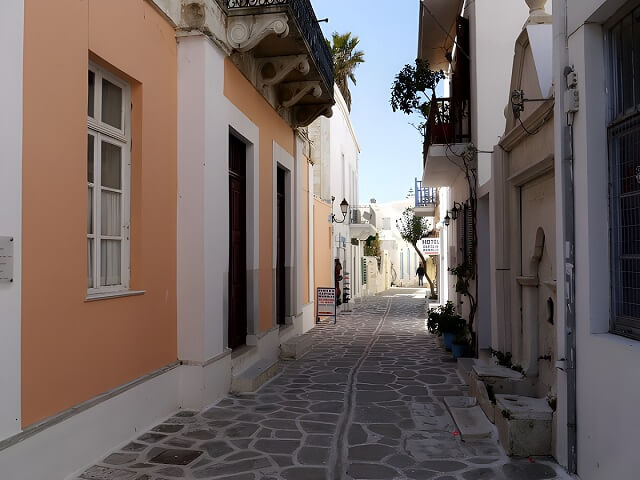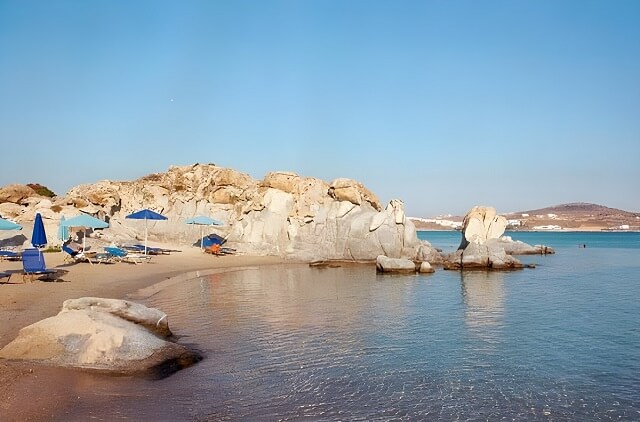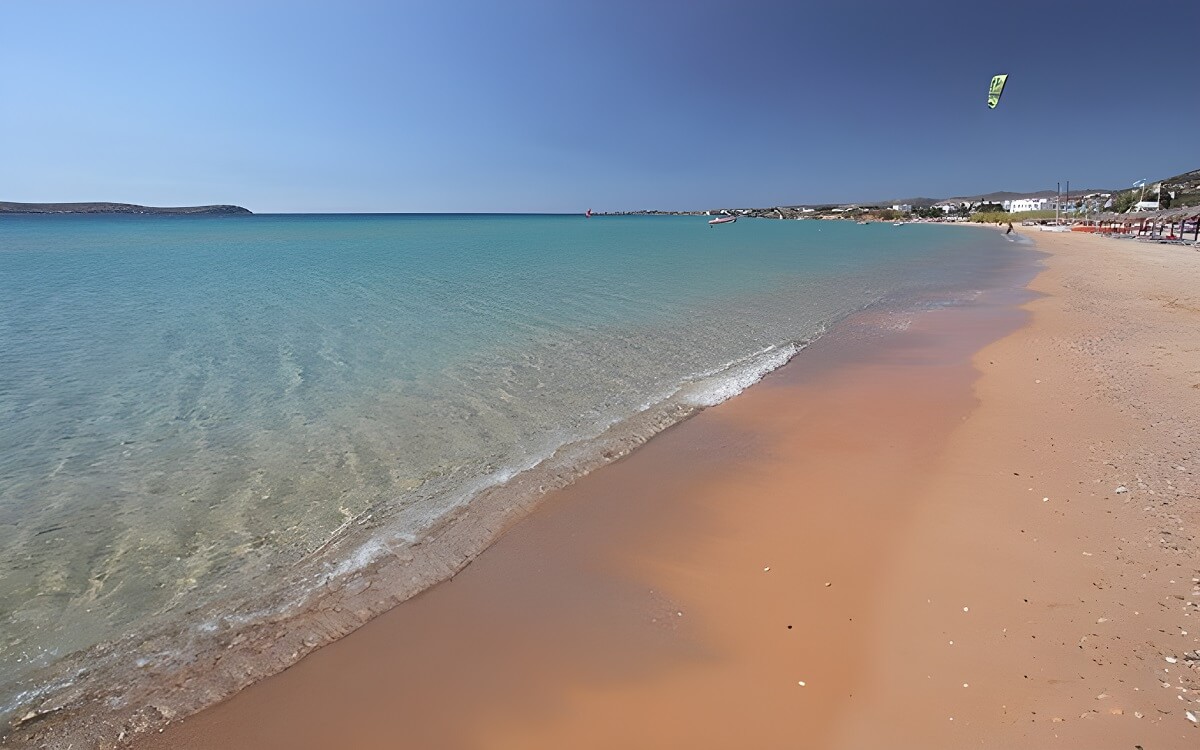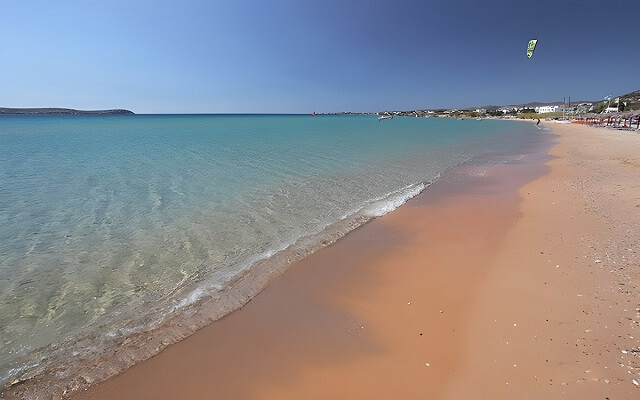Paros holidays: Everything You Need to Know About Beaches, Traditional Villages, Local Culture and Best Places to Visit on This Authentic Greek Island
Updated:
Paros, the third largest island of the Cyclades, has become a modern tourist center in recent years. The southern half of the island, uninhabited until recently, is now being intensively built up with tourist settlements.
Today, I will tell you about this island in Greece, how to get to it, what you can see, and whether it is worth visiting at all.
Paros - an island in Greece: what is this place and why is it worth visiting?
Paros is one of the Cycladic islands in Greece. It is located 85 nautical miles from Athens. The island is mountainous, with a maximum altitude of 724 meters. The nearest island, Naxos, is separated from Paros by a strait about three kilometers wide.
It is famous for the fact that in the local mountains for many centuries the most valuable Paros marble has been mined, which was used to create the Venus of Milos, the temples of Apollo and Hermes, as well as for many other famous sculptures and buildings.
Besides the mountains, the island has palm and olive plantations, endless vineyards, and endless beaches with pure golden sand.
Paros is also famous for its excellent red and white wines, exquisite cuisine, a large number of monuments of cultural and historical heritage sites, and a rich history.
In recent years, this romantic Greek island, of about 200 square kilometers, has been very popular with tourists from all over the world.
The climate here is mild, rain is infrequent, 10 months of the year, the weather is sunny and warm, so the the tourist season lasts all year round, but the best period for beach vacations is from mid-spring to mid-autumn.
Paros is a favorite destination for windsurfing enthusiasts. There are several stations in the area of Golden Beach and its neighboring bays.
The ferry port and capital of the island,Parikia, is located on the shore of the bay in the northwestern part of the island, on the site of the ancient city of Paros.
To the southeast of Paros lies the small island of Antiparos. The islands are separated by a narrow shallow strait. The sights of Antiparos are very popular among tourists, including those traveling by yacht.
The capital of the island of Paros, Parikia. It is a port city and the gateway to the island.
The history of the island of Paros goes back centuries. It was once the center of the ancient Cycladic civilization. In antiquity, the island was known as a mining site for the excellent Paros marble, from which great buildings were constructed and the famous statues of ancient Hellas were sculpted.
The island has many picturesque secluded chapels and monasteries, as well as two medieval Venetian fortresses.
Where is Paros located (island geography)
The island group of Paros – Antiparos is located in the center of the Cyclades, between Naxos and Sifnos, 90 nautical miles from the port of Piraeus, from where in fact, we sailed to the island of Paros.
The island has an area of only 196 sq. kilometers, and a coastline stretching 120 kilometers. The highest point of the island is the peak of Mount Agios Ilias (Saint Elijah) at 776 meters.
In the center of Paros there is the Marpissa mountain range,the highest peak of which is Strumbula – 730 m. The population of the island is about 13-14 thousand people.
Most of the island has rocky, rugged shores with small cozy bays. But if you head to the eastern coast, there you will find huge long beaches with golden sand. .
The port towns of Parikia and Naousa (many people call Naoussa a village or settlement) boast excellent beaches with fine, firm sand.
The soil on the island is stony, consisting mainly of granite and limestone. Despite this, the locals are actively engaged in agriculture and sow every piece of land suitable for farming, especially in the mountains on the plateau.
Location of Paros Island on the map
Climate of the island of Paros
Paros has a temperate climate, greatly influenced by the winds of the Melotemi, typical of the central Aegean Sea. Winters are mild with temperatures rarely dropping below zero, while summer temperatures are comfortable with strong winds and drought.
The windiest month is August. The north and northeast winds can be very strong, which attracts extreme wind enthusiasts who like to tickle their nerves.
Average temperature:
+12°C in winter;
+25-31°C in summer.
Water temperature:
In February +15°C;
In May +18°C;
In August +24.4°C;
In November +19.4°C.
I would like to note that I was on the island in the middle of June and it was very comfortable temperature, there was no strong wind.
In the evening it was a bit cool, but it was even good, as at night it was not hot in the house and I practically did not turn on the air conditioner. During the day it was warm and basically hot at the same time, not stuffy.
The water was very warm. I’m sure the sea was at least +25°C.I didn’t want to go out! The beaches here are incredible!
Stone Coast of Paros Island
How to get to Paros Island
There is a flight from Athens to the island of Paros, which takes no more than half an hour. You can find air tickets for domestic flights in Greece on this site.
There are also passenger ferries. The big one takes about 5 hours, the small one takes you to the island much faster – just a couple of hours.
Paros/Athens Piraeus: one-way tickets start from €55 per person.
The coastline of Paros is about 70 miles long. If you are traveling by yacht, you can find convenient and safe anchorage on either side of the island.
- In the north of the island, in the bay of Naousis there is the yacht marina Naousa;
- In the northwest is the port of Parikia;
- On the eastern side of the island is the fishing port of Piso Livadi;
- In the south, there are several anchorages that protect yachts from the Meltemi wind.
What to see and do on the island of Paros
The azure sea, white-washed Cycladic houses, an abundance of fish taverns, and an unwavering traditionalism that successfully withstands the onslaught of tourist trends. All this is the island of Paros, which, despite its size, is able to offer a kaleidoscope of options for a busy summer vacation.
The fishing village of Naoussa
We recommend starting your trip to Paros with a visit to Naoussa, which is one of the most beautiful parts of the resort, known for its narrow streets that start right at the harbor and churches a la Santorini—small, snow-white washed buildings with blue dome-shaped roofs.
Once you’ve strolled around Naoussa, don’t be in a hurry to leave to see the rest of the island’s sights. Take a short break for lunch and sample the local cuisine in one of the many tavernas located right on the shoreline.
Seafood is a popular favorite among the resort’s residents, and octopus dishes, prepared according to a traditional local recipe, are considered the pinnacle of local cooking. This is the first place to stop for a meal.
The port and moored boats in the fishing town of Naoussa
Lefkes
Have you eaten? Then it’s time to hit the road. As you know, it is not recommended to enter the water immediately after a big lunch, so you should not go to the beach.
I suggest you spend this time walking around the village of Lefkes. Its name comes from the word “white,” which is a reflection of the prevailing color scheme here.
Lefkes captivates with its pastoral scenery and the contrast between the snow-white architecture and the green-covered hills. The summer heat in this part of Paros is practically not felt and the islanders who are tired of the heat prefer to stop here for picnics. You can join them too.
Snow-white streets of the town of Lefkes
Parikia
The island capital, Parikia (or Chora), is the liveliest place on Paros. Throughout the day, and especially in the evening hours, you can have fun in a kaleidoscope of bars and nightclubs. Young people, as a rule, prefer the capital city to other parts of the island, although the older generation is also interested in the city.
If the center of the vast majority of cities on the planet is a square, in Parikia, its role is played by an old mill. It is located in the harbor area and is one of the attractions of the city.
The old mill, which is the center of the town of Parikia.
The capital of the island, like all the settlements of Paros, is in the classic Cycladic style – white-painted cubic houses of one or two (maximum three) floors with colorful windows and doors.
Fans of this architectural trend should definitely wander the streets of the city or go to the mountains, where Parikia offers a stunning panoramic view.
Are you up for a hike? Then we recommend using the monastery of Agia Anargiri as a vantage point – there is no better place.
Speaking of religion, churches are the hallmark of Parikia. There are countless of them and the most remarkable is the Panagia Ekatontapiliani. Take into account that it is included in the list of the most significant objects of Byzantine religious heritage of Greece.
Once you’re in the island capital, set aside an hour or two to visit the local archaeological museum. Its collection of Neolithic and Roman artifacts found on Paros will make you see the island through a whole new set of eyes.
The alleys of the capital of the island, the city of Parikia
Beaches of Paros Island
Paros is also known for its beaches.
The most interesting beach on the island of Paros is probably Kolimbithres. It is famous for its high rocks of very unusual shapes that resemble original sculptures in the sand.
Comfortable for bathing are the beaches:
- Livadia;
- Agios Fokas;
- Krios;
- Megalo and Micro-Piperi;
- Limnes;
- Langeri;
- Piso Livadi;
- Ambelas and Dryos.
As you can see, the choice of beaches is quite large.
Kolimbithres Beach
Small beaches between large rocks and water provide a beautiful setting! There you will find sun beds and clear water. Perfect for families with children. And just keep in mind. Don’t stay in the first cove, but check out the others!
Note: it can get very crowded in July and August!
Kolymbithres Beach
Santa Maria Beach
Santa Maria Beach starts off fairly shallow – great for kids – and then gently gets deeper.
There are a few beach bars and restaurants and even some water sports available for hire.
It is close to Naoussa and is served by a bus. May not be ideal during peak season if you are looking for a quiet and peaceful place.
Golden Beach
This is one of my favorite beaches, but maybe I’m a little biased because I spent a beautiful summer there!
This beach has deep blue waters, golden sands, and a beautiful Cycladic scenery. It’s also a great place to enjoy the local cuisine, from coffee to cocktails, right on the beach and from sandwiches to romantic dinners.
If you’re a surfer – all the more reason not to miss this place. Thanks to the amazing winds, it is one of the best windsurfing spots in Greece.
Golden Beach on Paros
Monastiri Beach
Beautiful beach, well-organized with long shallow and clear water – it is ideal for families with children. You can follow the rocky path (about 20 m) to the boats and here you will find a quiet, unorganized, nudist beach in the bay
Faragas Beach
The beautiful setting and clear blue water make this beach one of the first on my list. There is a nice beach restaurant where you can have lunch or just a snack.
It is sheltered from the northern winds, which are quite common on the island of Paros
Hotels on the island of Paros
There are just under 300 hotels on the island of Paros in Greece, most of which are categorized from 3* to 5*. It will be problematic to find inexpensive accommodation or hostel – the resorts are oriented towards wealthier tourists.
The following resorts are popular among travelers: Parasporos, Logaras, Naoussa, Parikia. The latter are the most popular because they are port towns, and tourists prefer to stay in them immediately, so as not to waste time on the road to neighboring resorts.
Logaras is known for its comfortable hotels— here they are much more than in neighboring resorts. Prices are quite high. Parasporos is famous for its beaches and beautiful promenade.
Speaking about the prices for accommodation, it should be noted that you can find relatively inexpensive housing options only in Parikia – since it is the largest city on the island, the price range here is the most significant. The cheapest room in a 3* hotel for two people per day in high season will cost 30 euros. The average price varies from 70 to 90 euros.
A similar situation exists in neighboring resorts—prices start from 40 euros, and the average nightly rate is around 80-90 euros.
Renting apartments can be slightly cheaper—a large and comfortable two-bedroom apartment will cost about 30-40 euros per night.
Useful tip: You can view all available hotels and apartments on the island of Paros via this link.
My recommendations for those who want to visit the island of Paros.
- Almost a 15-minute drive from Parikia ( port) is the place known as “Butterfly Park,” It is an idyllic landscape with dense vegetation. The park is open from June to September from 9 am to 8 pm. In summer, butterflies literally cover the leaves of the trees! It’s amazing to see them flying because the color under their wings is bright red, unlike the rest of their body, which is dark! Visitors are usually astonished by this paradise, which is quite rare in the Cyclades and on dry islands.
- Lefkes is perhaps the most famous mountain village on the island of Paros, and it’s truly worth wandering through its alleys. But if you leave your car, your watch, and your stress behind, you can walk along one of the many trails on Paros that leads to the village of Prodromos. This village preserves the tranquility and traditional lifestyle of a bygone era. Get lost in the whitewashed buildings of the village and make your way to two local churches.
- There are many beautiful beaches,here such as Chrisi Akti, Punta Bar Beach, Santa Maria, as well as Faraggas and Aliki. But near Naoussa, you will find the stunning Laggeri with impressive sand dunes and cedar trees that provide privacy for lovers of unspoiled nature.
- And when night falls, another attraction appears. We love Parikia and especially the nightlife of Naoussa, because there are really cool bars and clubs where young people gather every night. If you’re looking for a pleasant atmosphere and good music, head to the Golden Garden bar. On top of that, enjoy a cocktail in the beautiful garden or in the large bar, which is the perfect place to relax, meet and get to know each other.
